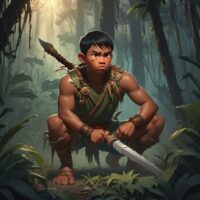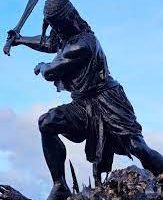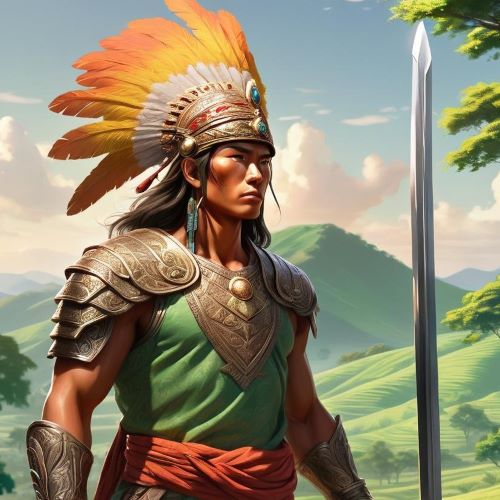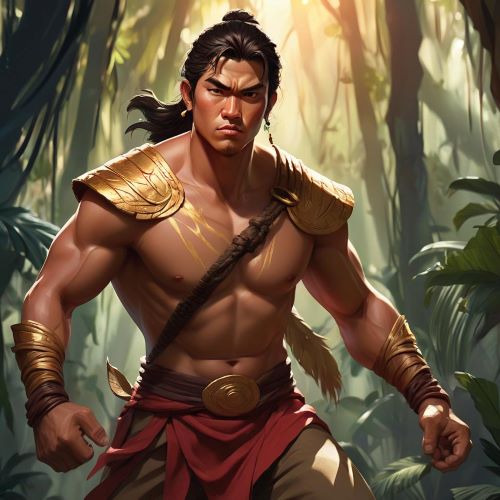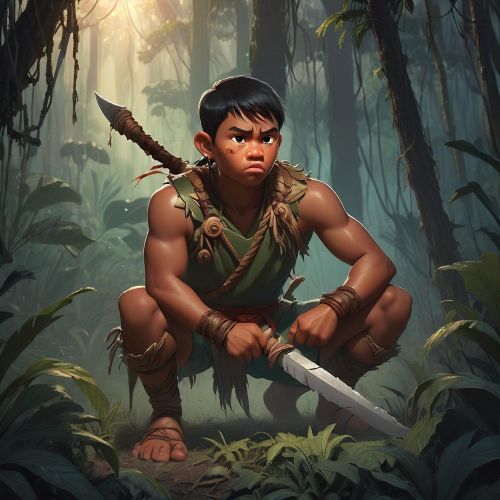
Bantong : The Epic Hero
Listen
At a glance
| Description | |
|---|---|
| Origin | Philippine Mythology |
| Classification | Mortals |
| Family Members | N/A |
| Region | Philippines |
| Associated With | Intelligence, Patience |
Bantong
Introduction
Bantong stands as a revered figure in the Ibalong Epic, one of the oldest surviving folk narratives from the Bicol region of the Philippines. Alongside the mighty Baltog and the noble Handyong, Bantong plays a crucial role in transforming the chaotic, monster-ridden land of Ibalong into a realm of order and civilization. Unlike his counterparts, Bantong is not remembered solely for brute strength or military command, but for a more cerebral kind of heroism. His most iconic feat—the defeat of the stone-turning beast Rabot—elevates him as a symbol of cunning, patience, and ethical leadership. As stories of Bantong continue to be shared in classrooms, festivals, and digital spaces, he emerges not just as a mythical warrior but as a timeless embodiment of intellect triumphing over savagery.
Physical Traits
Though the epic doesn’t offer specific physical descriptions of Bantong, interpretations through art and performance often depict him as a young, agile warrior. Unlike the muscular depiction of Baltog or the regal aura surrounding Handyong, Bantong exudes stealth and precision. His lean build hints at a hero designed for speed and subtlety, not for frontal combat. His movements are calculated, his eyes sharp with insight, reflecting his role as the observer and tactician among the trio of Ibalong’s champions. His traditional attire, often including a bolo and minimal warrior garb, adds to his grounded, strategic character—never showy, always ready.
Family
There is no detailed record of Bantong’s genealogy in the Ibalong narrative, which is a common feature in Philippine epic storytelling. The focus is not on bloodlines but on deeds. While Baltog and Handyong are remembered for their strength and leadership, Bantong forms his legacy through his actions and trusted alliances. His relationship with Handyong in particular is portrayed as a strong bond forged through shared missions and mutual respect. When Handyong entrusts Bantong with the mission to eliminate Rabot, it speaks volumes about the trust placed in his judgment and capability. In this way, familial concepts in the epic are represented through loyalty, unity, and chosen kinship rather than hereditary ties.
Other names
The consistency of the name “Bantong” across various accounts adds to his singular mythic identity. Unlike other mythological characters who undergo name shifts across regions or languages, Bantong retains a stable presence in Bicolano oral traditions and literature. His name itself becomes synonymous with the themes of intellect, courage, and silent strength. This singular naming also allows Bantong to stand distinctly apart from divine figures and mythical shapeshifters, reinforcing his position as a mortal yet exceptional cultural hero.
Powers and Abilities
Bantong’s greatest asset is his intellect. While his predecessors used sheer physicality to overcome enemies, Bantong relied on strategy. When confronted with the monstrous Rabot—a creature capable of turning humans into stone—Bantong didn’t attack in haste. He watched, waited, and studied the monster’s habits. Realizing that Rabot slept deeply during the day, Bantong patiently waited for the right moment. At the break of dawn, when the beast was most vulnerable, he struck with lethal precision, killing Rabot with a single, decisive blow. This act of slaying a feared creature without a drawn-out battle illustrates not just bravery, but deep understanding and perfect timing. His ability to blend patience with precision defines his unique brand of heroism within the Ibalong Epic.
Modern Day Influence
Bantong’s influence continues to ripple through contemporary Philippine culture, especially in Bicol, where his story is celebrated as a source of regional pride. The annual Ibalong Festival in Legazpi City reenacts the tales of Bantong, Baltog, and Handyong through theatrical performances, parades, and visual art. Here, Bantong is often portrayed as the cerebral hero, the one who wins not by force but by foresight. His presence in the festival reminds modern audiences of the importance of strategy, humility, and observation.
In literature, Bantong’s tale is used to teach students about pre-colonial Filipino values and indigenous storytelling traditions. His character is a popular inclusion in textbooks and academic discussions centered on native epics and oral history. Beyond formal education, his story appears in digital formats—on websites, blogs, and social media platforms promoting Philippine mythology. This resurgence has introduced Bantong to new audiences, who appreciate his thoughtful approach to heroism in contrast to more conventional action-driven narratives.
Artists and performers also continue to reinterpret Bantong through modern media. From stage musicals to graphic novels and animation concepts, Bantong’s story adapts well into contemporary storytelling. His tale is not just entertaining—it resonates with themes relevant to current issues like leadership, mental discipline, and ethical decision-making.
In popular imagination, Bantong serves as a counterpoint to the often glorified idea of brute heroism. He represents a kind of leadership that values observation, respect for knowledge, and acting only when necessary. This quiet form of strength makes him a compelling figure in an era where strategy often outweighs spectacle.
Related Images
Source
Academia.edu. (2014). The myths of the Philippines. https://www.academia.edu/download/68322821/_Gaverza_Thesis_Fixed_Entry_To_Upgrade_.pdf
Wikipedia contributors. (n.d.). Ibalong Epic. Wikipedia. https://en.wikipedia.org/wiki/Ibalong_Epic
Aswang Project. (2018). HANDYONG & ORYOL: A Bicol Folk Tale of Love and Redemption. https://www.aswangproject.com/handyong-oryol/
Saminovic WordPress. (n.d.). Bantong | BICOL-MAN. https://saminovic.wordpress.com/tag/bantong/
Dateline Ibalon. (2023). Tourism is Storytelling | Nick Tayag – dateline ibalon. https://dateline-ibalon.com/2023/01/tourism-is-storytelling-nick-tayag/
Wikipedia contributors. (n.d.). List of Philippine mythological figures. Wikipedia. https://en.wikipedia.org/wiki/List_of_Philippine_mythological_figures
Cryptidz Wiki. (2016). Creatures and Beings of Philippine Folklore and Lower Mythology. https://cryptidz.fandom.com/wiki/Creatures_and_Beings_of_Philippine_Folklore_and_Lower_Mythology
Frequently Asked Questions
What is lorem Ipsum?
I am text block. Click edit button to change this text. Lorem ipsum dolor sit amet, consectetur adipiscing elit. Ut elit tellus, luctus nec ullamcorper mattis, pulvinar dapibus leo.
What is lorem Ipsum?
I am text block. Click edit button to change this text. Lorem ipsum dolor sit amet, consectetur adipiscing elit. Ut elit tellus, luctus nec ullamcorper mattis, pulvinar dapibus leo.
What is lorem Ipsum?
I am text block. Click edit button to change this text. Lorem ipsum dolor sit amet, consectetur adipiscing elit. Ut elit tellus, luctus nec ullamcorper mattis, pulvinar dapibus leo.
What is lorem Ipsum?
I am text block. Click edit button to change this text. Lorem ipsum dolor sit amet, consectetur adipiscing elit. Ut elit tellus, luctus nec ullamcorper mattis, pulvinar dapibus leo.
What is lorem Ipsum?
I am text block. Click edit button to change this text. Lorem ipsum dolor sit amet, consectetur adipiscing elit. Ut elit tellus, luctus nec ullamcorper mattis, pulvinar dapibus leo.


